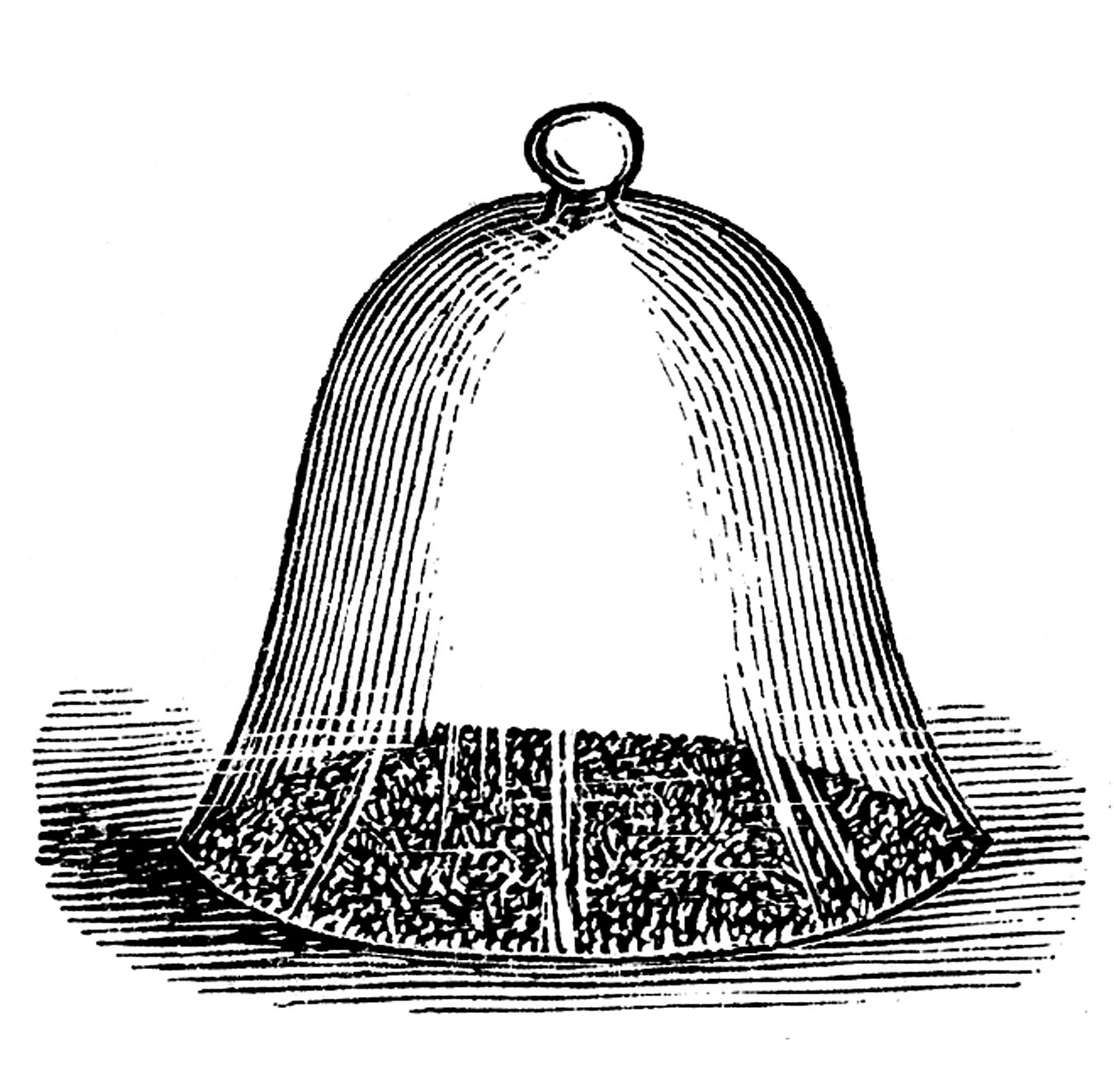
The Garden Cloche
A cloche can loosely be defined as a structure that is placed over a
plant to protect it from the cold. The first mentioning of a cloche can
be found around 1630 in a gardening treaty. John Evelyn (1620-1706)
mentioned bell glasses as a mandatory garden tool in his Elysium Britannicum, or The Royal Gardens or Three Books.
Those who could not afford the expense of glass cloches were not deprived of this important tool. Cloches made from straw could be found throughout many colonial fields.
Cloches throughout history have been very important in plant protection. A basic cloche works by absorbing heat during the day and releasing it at night. This allows the gardener to put their crops out sooner and harvest sooner. But the story does not end there. To prevent your plants from getting too hot during the day and cooking, one must vent it in some fashion. Glass bell cloches need to be removed from the plant before the sun hits it or place bricks around the plant and set the bell cloche on the bricks. These bricks will create a vent by which excess heat can be released.
Information from: site.outdora.com